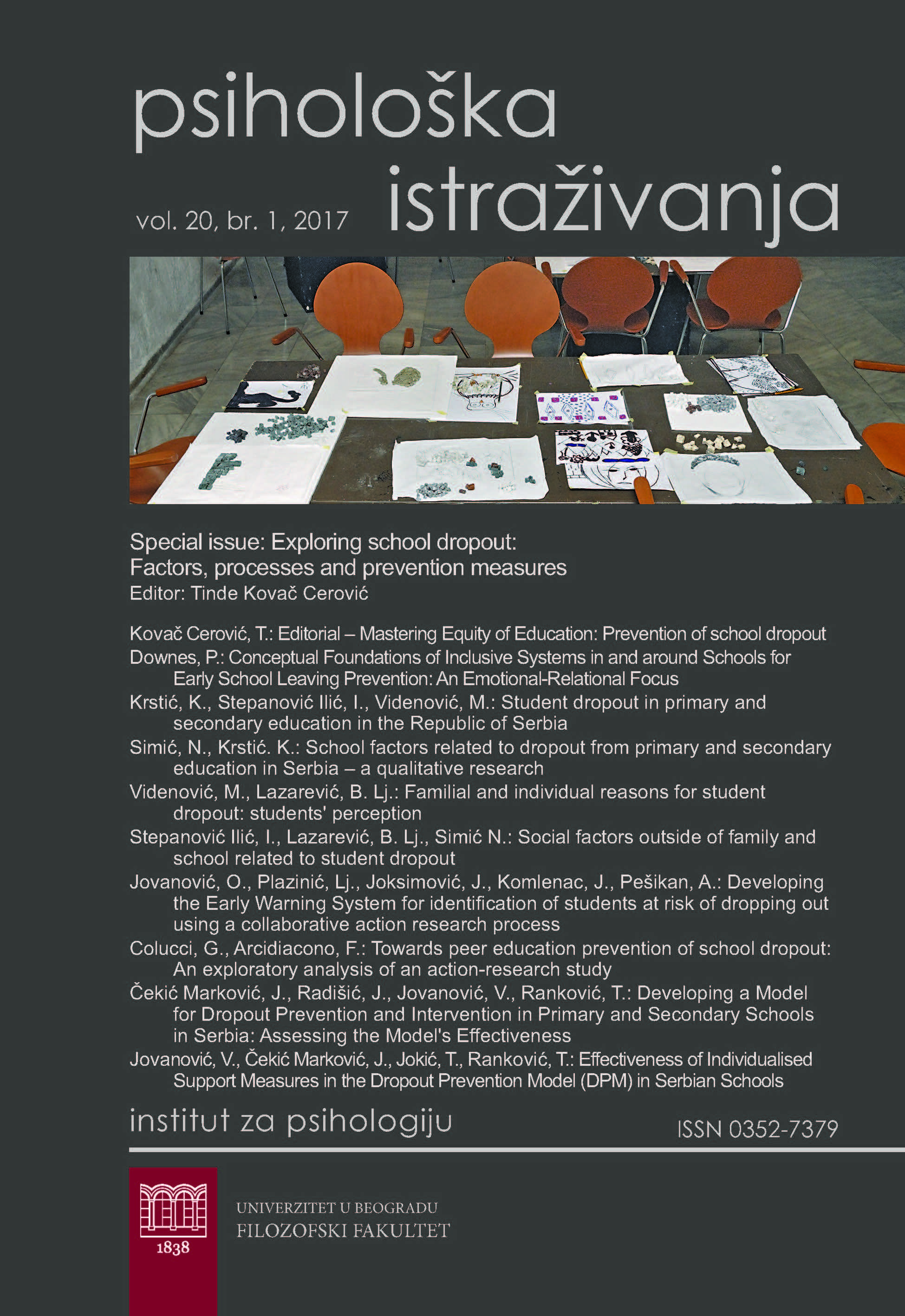Effectiveness of Individualised Support Measures in the Dropout Prevention Model (DPM) in Serbian Schools
Effectiveness of Individualised Support Measures in the Dropout Prevention Model (DPM) in Serbian Schools
Author(s): Vitomir Jovanović, Jasminka Čekić Marković, Tijana Jokić, Tanja RankovićSubject(s): Psychology, Educational Psychology
Published by: Филозофски факултет, Универзитет у Београду
Keywords: prevention of dropout; dropout risk factors; individualised support measures; Individual Plans for Dropout Prevention; equity
Summary/Abstract: The purpose of this paper was to evaluate the effectiveness of individualised support measures within the Dropout Prevention Model (DPM) after two years of implementation in 10 pilot schools in the seven most vulnerable municipalities in Serbia. The core activities within the DPM identification of students at risk of dropping out were the calculation of the Risk Index (RI) for each of them, and the development of the Individual Plans for Dropout Prevention (IPDPs) as a tool for sustainable planning and provision of support to at-risk students. The sample consisted of 450 students with IPDPs from the pool of 5,884 students with the calculated RI. The evaluation of individualised support measures was conducted through quasi-experimental design at different time points, a qualitative analysis of structural aspects of IPDPs and the examination of the relationship of categories of measures and risk factors, RI and key indicators. Results demonstrate desirable effects of the individualised measures on the prevention of dropout. The Instrument for identification of students at risk of dropout showed high sensitivity for students at very high dropout risk. Only 5% of the students at very high dropout risk for whom IPDPs were developed dropped out of school after two years of implementation of the DPM. Further analysis of the correspondence between the types of support in IPDPs showed a good adjustment to the types of risk factors. The schools demonstrated a good capacity to decrease the influence of the risk factors from the immediate students’ environment, such as poverty. The results presented arguments that support further scaling up of the IPDPs within the DPM to the other schools.
Journal: Psihološka istraživanja
- Issue Year: 20/2017
- Issue No: 1
- Page Range: 171-193
- Page Count: 23
- Language: English

